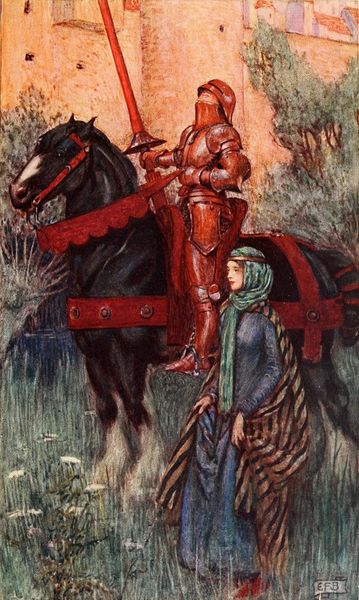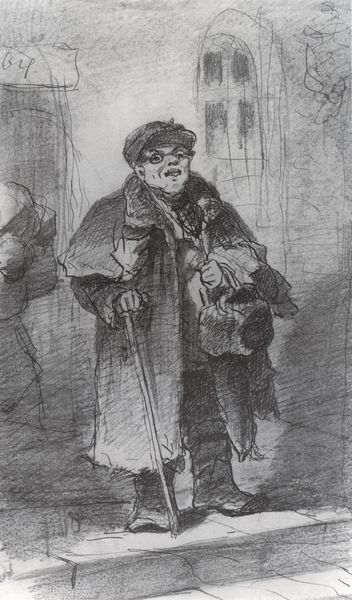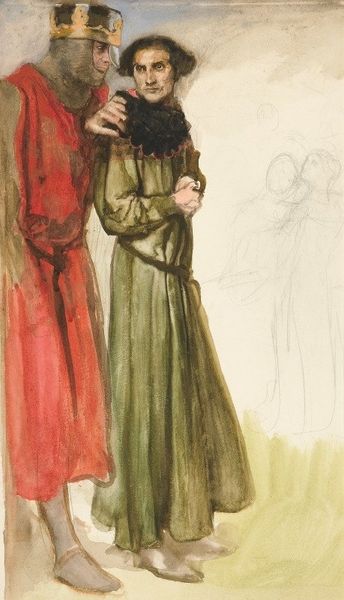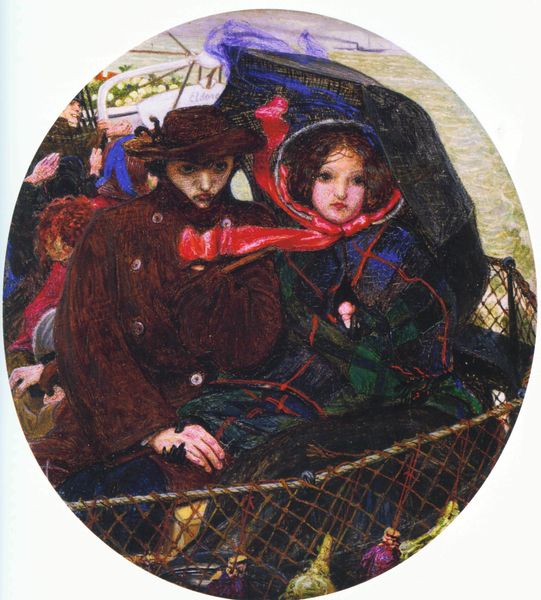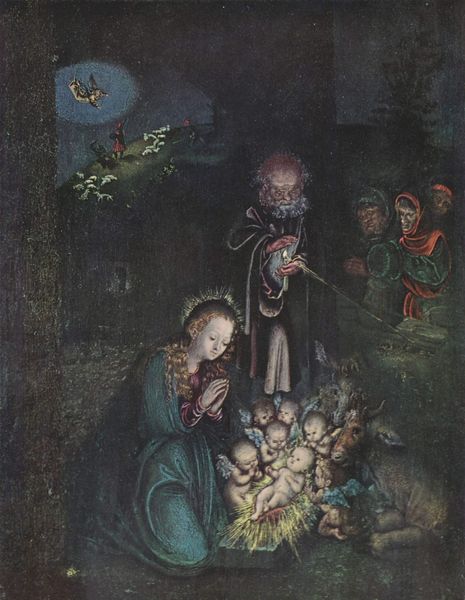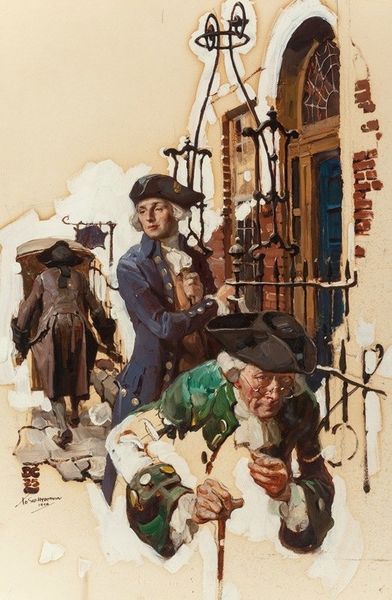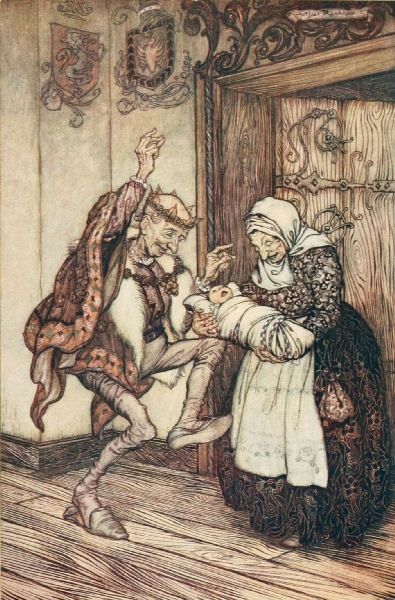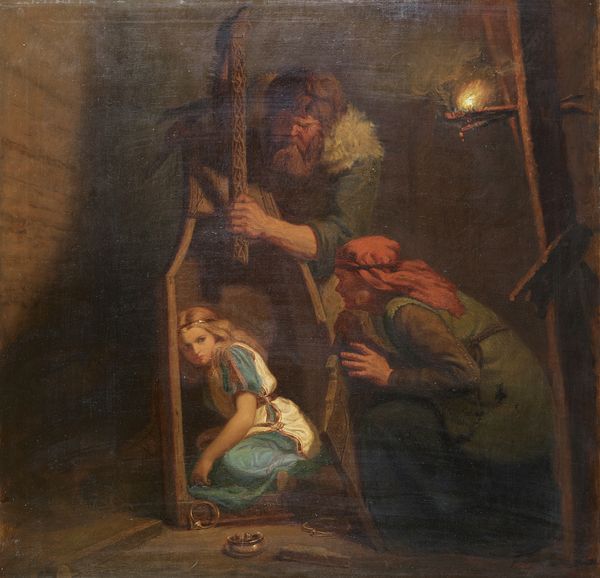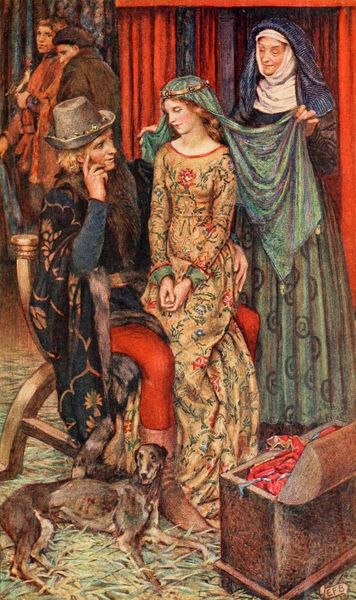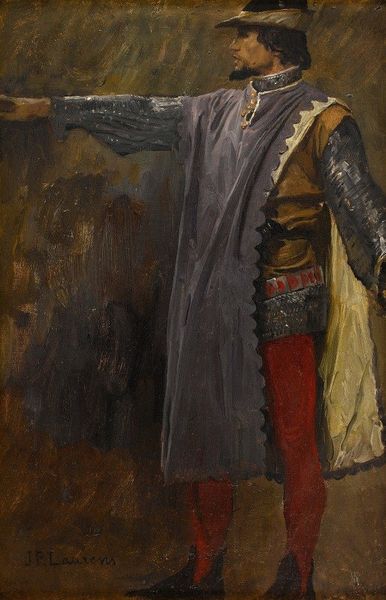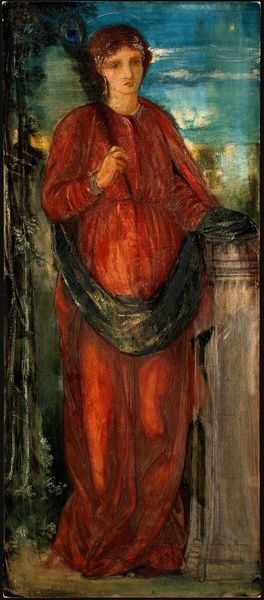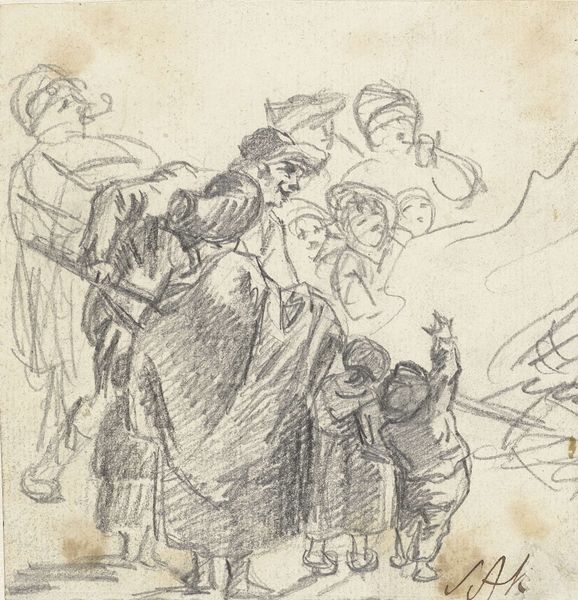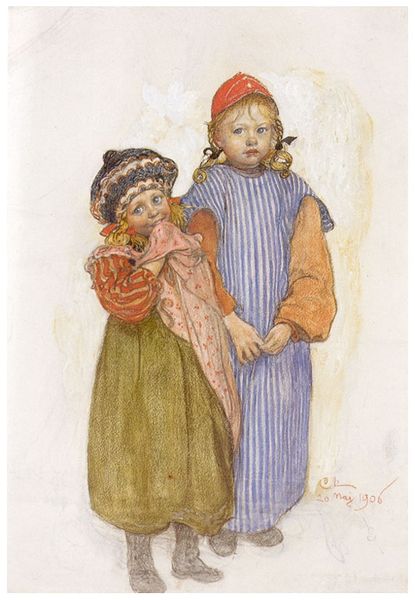
Sir John Falstaff with His Page, King Henry IV, Part II, Act I, Scene II 1905
0:00
0:00
oil-paint
#
portrait
#
figurative
#
oil-paint
#
painted
#
figuration
#
oil painting
#
genre-painting
#
history-painting
Copyright: Public Domain: Artvee
Edwin Austin Abbey captured this scene from Henry IV, Part II, immortalizing Falstaff and his page in oil paint. Falstaff, a symbol of revelry and excess, wears a flamboyant, red jester-like outfit, suggesting his role as a comedic figure. Consider the motif of the fool, found throughout history, from the Roman Saturnalia to the medieval Feast of Fools. Here, Falstaff's attire connects him to this lineage, yet his presence is more complex. Note the gesture of his hand, a subtle invitation. It echoes the beckoning figures found in ancient Roman frescoes, luring us into a world of mirth but also, perhaps, moral ambiguity. This symbol has traveled through time, reappearing in different guises, from the medieval court jester to the modern clown, each incarnation reflecting changing societal attitudes toward humor, authority, and transgression. Falstaff, like these figures, holds a mirror to society, reflecting our own follies and desires. The enduring appeal of this character lies in his ability to tap into our collective subconscious, reminding us of the eternal dance between order and chaos.
Comments
No comments
Be the first to comment and join the conversation on the ultimate creative platform.
